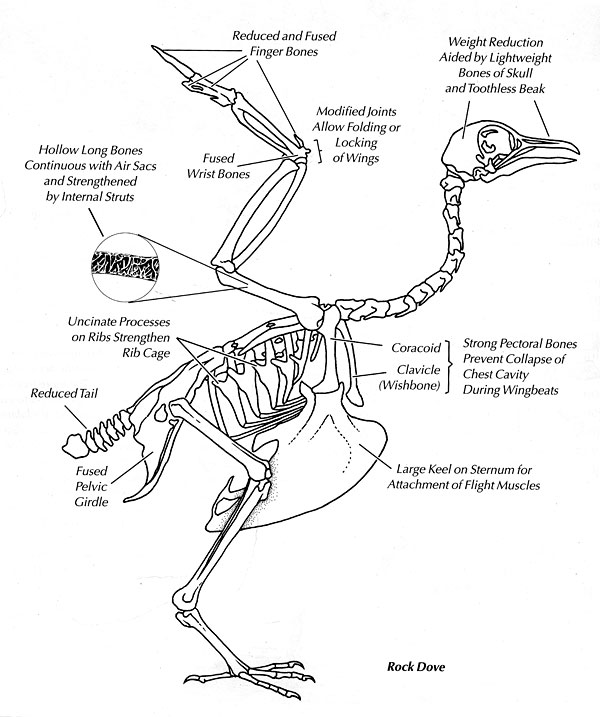ARCTIC TERN MIGRATION
Adaptive Value: What Allows The Tern To Make This Journey?
Body StructureArctic Terns adapted to their migratory life style by certain key features:
Birds are covered with feathers which provide necessary insulation to maintain the body temperature of birds to ensure there is optimal metabolic activity to ensure that energy output is maximized.
The feather structure, particularly on the wings are such that they act as air foils creating the necessary lift to allow the bird to take off and also glide on air currents.
It possess a streamlined shape and a light weight skeleton. The lightness of the skeleton is enhanced by the fact that the bones are hollow. The advantage of this is that the bird becomes less air resistance and more importantly, a smaller mass mean less energy is needed to get it air borne.
Posses a large four chambered heart (proportionally weighing 6 times its body weight). The large heart and a rapid heart beat, keep the muscles highly vascularized.
Two lungs take up 20% of the birds volume by mass remaining inflated at all times. The lungs are also made up of air sacs that act as bellows and keep the lungs with a constant air supply.
In addition to the above features, which are not exclusive to migratory birds, the following features are of great helps to long distance travelers like the Arctic Tern.
Longer and more pointed wings, serve to minimize air resistance.
Pectoral muscles are larger and muscle fibers are vascularized and contain more mitochondria the end result is that wing muscles are more efficient in energy consumption.
There is a higher concentration of red blood cells in the blood. Hence, blood oxygen carrying capacity is increased, allowing the Tern to fly at higher altitudes for longer periods.

The above photo displays the physiology of the Rock Dove(Ref**), these are the features that allow it to migrate. These features can be generalized to fit most migratory birds and for our scenario, will serve as the example of the physiology of the Arctic Tern.
Navigational Sense
Given the fact that year after year the same birds are able to move from habitat range to another, each time residing in an area that is only a few hectares wide, we can conclude that Arctic Terns and migratory birds in general have a really good sense of direction.
With this in mind there are a mixture of theories as to how migratory birds in general make this incredible journey. A few of the main theories are highlighted below it should be noted though that it is possible that any particular bird species may use a mixture of these methods to find its way during migration.
Landmarks: This is where a bird uses some feature or features in the environment to map out a destination and the route to a destination. In the case of Arctic Terns finding a site in the Antarctic it may be some kind of natural rock formation for instance.
In an experiment(Ref**) carried out on Homing Pigeons, to test their use of land marks, a sample of birds were flown out into the middle of the Atlantic from France. Only a tinny fraction of the sample were able to find their way back to their point of origin, showing they do need the presence of some landmarks to help guide them.
Solar Cues: Many birds, not just migratory birds make use of the position of the sun to determine their location. In this case the sun acts as a compass, that is developed in tandem with a birds internal clock to help navigate its flight routes. In the 1950's Gustav Kramer conducted experiments using European Starlings. He placed them in Opaque cages with glass tops and found that they oriented themselves according to their corrected migratory direction on sunny days, while on cloudy days they oriented themselves randomly (Ref**). Similarly an experiment carried out in 1980 by